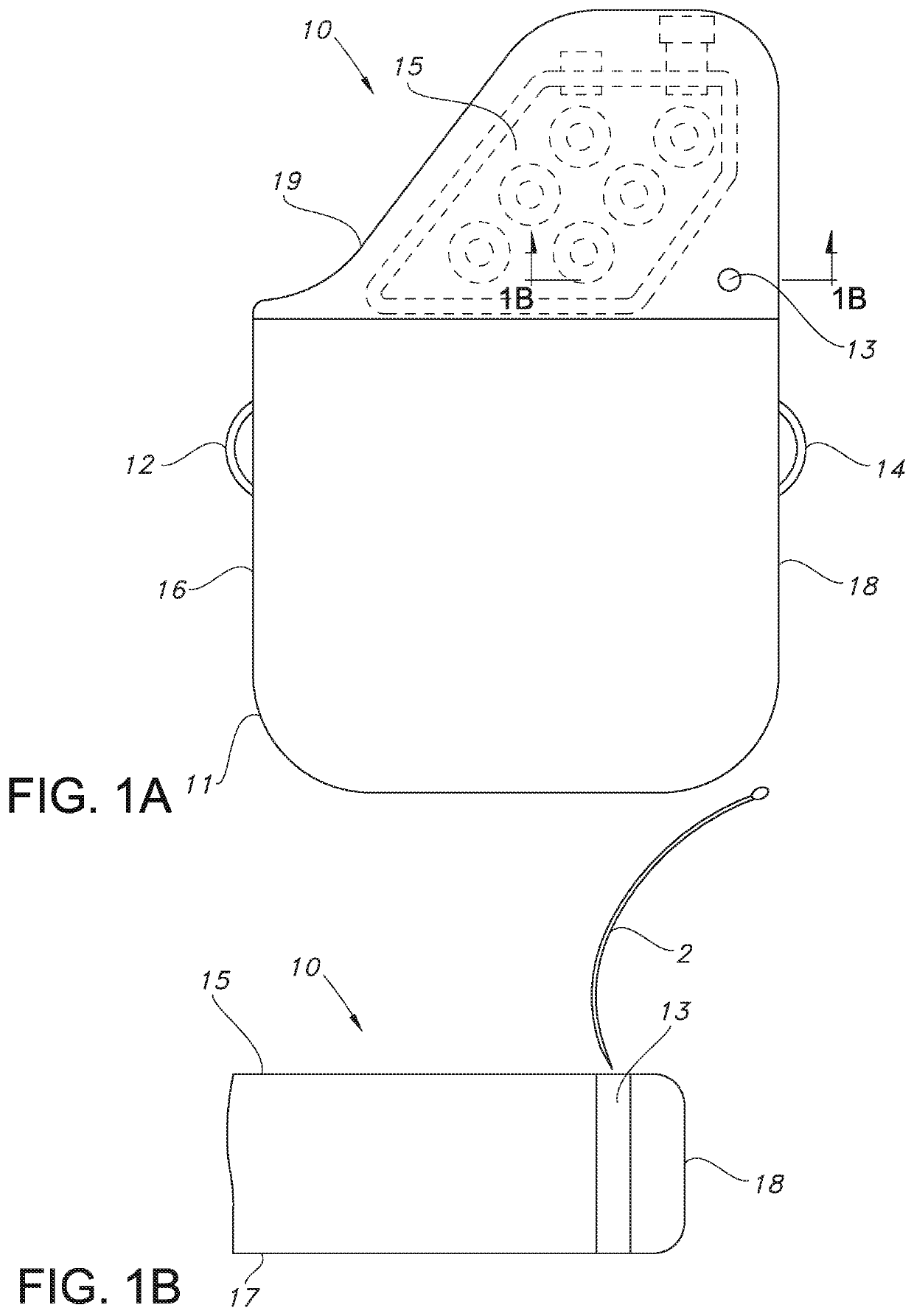Implantable pulse generator with multiple suture ports
a pulse generator and suture port technology, applied in the field of implantable medical devices, can solve the problems of ipgs that cannot be re-positioned, moved laterally, rotating, or inverting, and the device is ineffective in performing the intended function, and achieves the effect of facilitating implantation, maximizing the internal volume of housing components, and facilitating implantation
- Summary
- Abstract
- Description
- Claims
- Application Information
AI Technical Summary
Benefits of technology
Problems solved by technology
Method used
Image
Examples
Embodiment Construction
[0033]For a general understanding of the present invention, reference is made to the drawings. In the drawings, like reference numerals have been used throughout to designate identical elements. The drawings are to be considered exemplary, and are for purposes of illustration only. The dimensions, positions, order, relative sizes, device shapes, and suture hole shapes reflected in the drawings provided herewith may vary.
[0034]In the following disclosure, the present invention is described in the context of its use as an implantable pulse generator used for medical purposes in a human or animal. However, it is not to be construed as being limited only to use in generating electrical pulses for therapeutic purposes. The invention is adaptable to any use in which it is desirable to implant and secure a compact device in human or animal body tissue. Additionally, the description may identify certain components with the adjectives “front,”“rear,”“top,”“upper,”“bottom,”“lower,”“left,”“rig...
PUM
 Login to View More
Login to View More Abstract
Description
Claims
Application Information
 Login to View More
Login to View More - R&D
- Intellectual Property
- Life Sciences
- Materials
- Tech Scout
- Unparalleled Data Quality
- Higher Quality Content
- 60% Fewer Hallucinations
Browse by: Latest US Patents, China's latest patents, Technical Efficacy Thesaurus, Application Domain, Technology Topic, Popular Technical Reports.
© 2025 PatSnap. All rights reserved.Legal|Privacy policy|Modern Slavery Act Transparency Statement|Sitemap|About US| Contact US: help@patsnap.com



